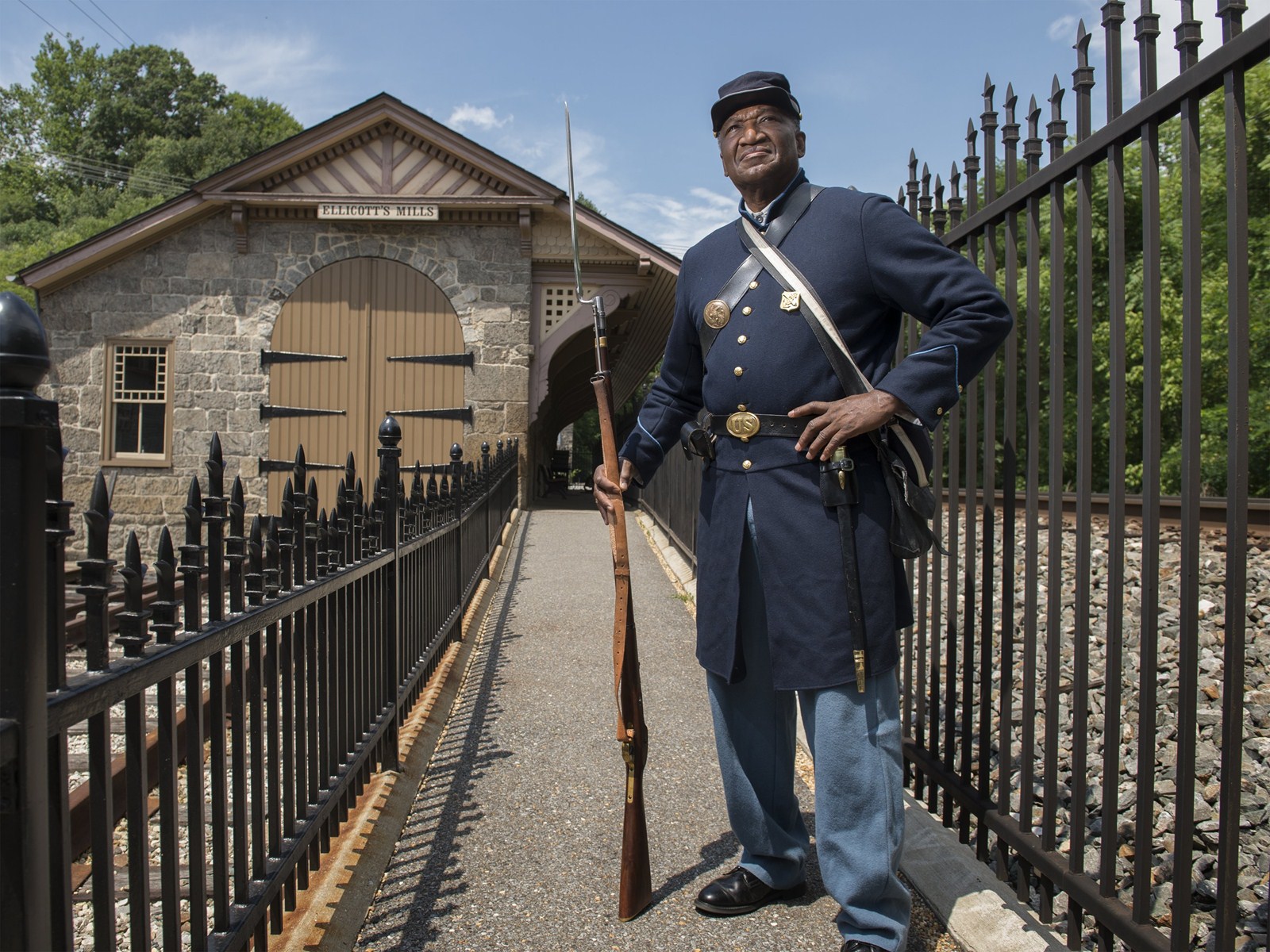Commemorating forgotten heroes
Ellicott City event to look at role of African-Americans from Howard,
including a Medal of Honor winner, who fought in the Civil War


The role of six dozen Howard County African-Americans who served as Union soldiers in the U.S. Colored Troops during the Civil War will be commemorated July 30 in Ellicott City on the 152nd anniversary of the Battle of the Crater — an ambitious attack that spawned a hometown hero.
The conflict is named for the huge crater that Union forces created in July 1864 by detonating four tons of dynamite in a tunnel they dug under the Confederate lines in Petersburg, Va. Battle plans called for troops to charge into and around the crater in a surprise assault, though many soldiers became sitting ducks unable to climb out of the hole.
The Union Army was defeated and suffered 5,500 casualties. Howard County native Decatur Dorsey — who had enrolled in the 39th Regiment of the USCT just months before at age 28 and served as its standard-bearer — was awarded the Medal of Honor for his actions.
“Many people don't realize we've had African-American heroes for over 150 years,” said Ed Lilley, assistant site manager at the Ellicott City Station of the B&O Railroad Museum, where the event will take place.
“As a historian, I believe there are a lot of people who have no clue that there were whole regiments of black troops fighting in the Civil War,” he said.
“There may even be people who don't realize there was slavery in Howard County,” said Lilley, noting there is continuing debate over Dorsey's status as an escaped slave or a freeman when he enlisted in Baltimore. “That's why the museum likes to hold these events.”
Dorsey and 70 other black soldiers, who served in various battles of the Civil War, will be memorialized at the museum. Their names, and brief biographies where available, will appear in a display that highlights Dorsey's courage in guiding his troop's movements in battle by carrying the regimental flag, Lilley said.
Two re-enactors will share other details about the role of African-American troops in Civil War at the open-house event from 10:30 a.m. to 4:30 p.m.
Ed Gantt, a retired Navy captain from Prince George's County, will appear in the uniform of a Union private, musket in hand. Marquett Milton of Washington will appear as a corporal.
Gantt, 65, said he was inspired to join the 23rd Regiment re-enactors in 2014 after a series of events over the years reinforced his interest in history.
First, he learned more about the Civil War during his time in War College, where senior military officers go “to study the little things that might have made a difference, and how one thing might have changed a battle's outcome,” he said.
Next, he coordinated a bus trip for his church to the African American Civil War Memorial & Museum in Washington, where a curator told the crowd that 200,000 black men had fought in the war.
Gantt also discovered that four black soldiers with his surname were listed on the 1864 rolls of the 23rd Regiment.
But the final tipping point came two years ago when a plea went out for African-American men to join in re-enacting the Battle of the Wilderness in Fredericksburg, Va.
“I recognized that it was my personal responsibility to my ancestors to represent,” he said, adding that 10,000 re-enactors from as far away as Maine and Minnesota took part in the event.
Gantt said he has not been able to confirm if anyone in his family fought in the USCT, since African-American genealogy records from that era are “spotty or nonexistent.”
According to the National Park Service's website for Petersburg National Battlefield, Gen. Ulysses S. Grant “summed it up best for the Union, saying the Battle of the Crater was ‘the saddest affair I have ever witnessed in the war.' ”
Of the 5,500 casualties, 4,000 were Union soldiers, many of whom were “caught in a dead-end situation” and fired down upon, Gantt said.
“Black troops were to lead the assault after the explosion, but they were switched out for white troops,” he said.
“There was still doubt [among officers] that black troops would fight; you could easily convince someone they were either ill prepared or not willing,” he said. “The decision to swap out troops added to the disastrous outcome.”
Gantt will also talk about the Battle at Fort Pillow near Memphis, Tenn., which resulted in the massacre of 200 black Union troops, most of whom had already surrendered, he said.
“That battle weighed heavy on the minds of white leaders at Petersburg, and led Brigadier Gen. Henry Pleasants to come up with the idea to dig a tunnel under the Confederate wall and fill it with explosives to cause a breach,” he said.
After Petersburg came the Battle of New Market Heights in Richmond, Va., for which 14 African-Americans were awarded the Medal of Honor.
According to the National Park Service website, “This was an especially significant event in American military history, given that only 16 Army Medals of Honor were awarded to black troops during the entire Civil War.”
Gantt said the high number of medals awarded to African-Americans for that particular battle “was probably due to Gen. Benjamin Butler, who had the opposite attitude about the willingness of the U.S. Colored Troops to fight. He felt they were ready and just looking for an opportunity.”
Some of the officers' thinking back then was due to an unwillingness to rely on a group of people with whom they'd had no contact, he speculated.
“It's extremely difficult to cross a sociological border,” Gantt said. “Such a border is as effective as any wall, and still contributes today to a lack of understanding.”


 PREVIOUS ARTICLE
PREVIOUS ARTICLE
